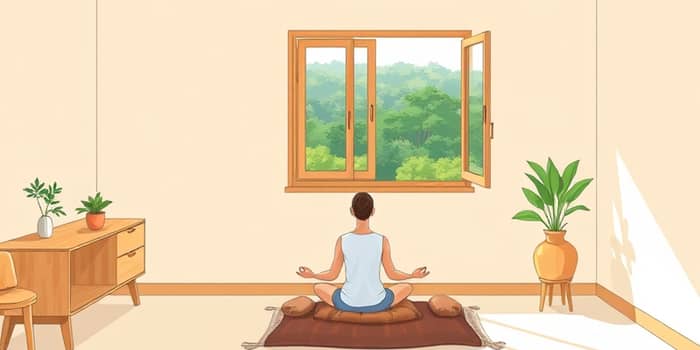
In a world of constant consumption, embracing minimalism and mindfulness can transform your relationship with money, possessions, and purpose. This article explores how to harness both philosophies for lasting financial freedom.
Minimalism is more than a design aesthetic—it is an intentional lifestyle focused on focusing on what truly matters by reducing excess in every aspect of life.
At its core, minimalism emphasizes:
Mindfulness complements minimalism by inviting us to be fully present. It teaches us to observe our thoughts, emotions, and actions with gentle curiosity and without judgment. Practice can include meditation, mindful eating, or pausing before each purchase.
Adopting a minimalist mindset delivers profound mental and emotional rewards beyond a tidier home. Research indicates significant improvements in stress levels, focus, and overall life satisfaction.
By decluttering both space and mind, you create room for creativity, meaningful relationships, and moments of genuine happiness. Studies show over 80% of minimalists link their well-being to prioritizing values above possessions.
Minimalism reshapes spending habits through deliberate evaluation of wants versus needs. This mindset shift can yield substantial savings, accelerate debt repayment, and build financial resilience.
Key financial impacts include:
Concrete outcomes of mindful spending include saving up to 30% more by curbing impulse purchases and accelerating debt reduction. Many minimalists align with the FIRE (Financial Independence, Retire Early) movement by embracing the opportunity for financial independence.
Translating mindful minimalism into daily life involves small, consistent actions that compound over time.
Over time, these habits create a virtuous cycle of increased savings, reduced stress, and greater freedom to pursue passions.
While mindful minimalism offers many benefits, the transition can bring discomfort and societal pushback.
Supportive communities, both online and locally, can provide encouragement and share strategies for overcoming obstacles.
True mindful minimalism is not about deprivation; it is about liberating yourself to focus on what you value most. The goal is to design an environment—both external and internal—that supports your ideal life.
Reflect on your core values regularly. Use them as a compass to guide purchases, commitments, and daily choices. By doing so, you maintain alignment between your resources and your deepest aspirations.
Embrace rituals that reinforce simplicity and presence, such as:
• A weekly self-audit of possessions and activities.
• Mindful breathing breaks during work or chores.
• Purposeful home design focused on light, space, and functionality.
Over months and years, these intentional practices yield profound shifts: less financial worry, more time for passions, and a deep sense of freedom that transcends monetary wealth.
Mindful minimalism offers a clear pathway to financial freedom, mental clarity, and emotional resilience. It invites you to reassess priorities, cultivate awareness, and take control of your life trajectory.
Begin today by choosing one small action—whether decluttering a drawer, pausing before a purchase, or launching a gratitude practice—and watch as each step builds toward a more intentional, fulfilling, and financially liberated future.
References





